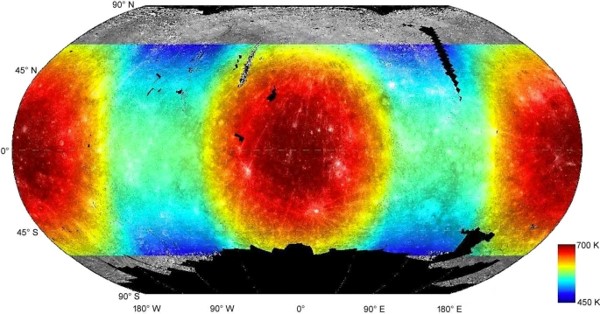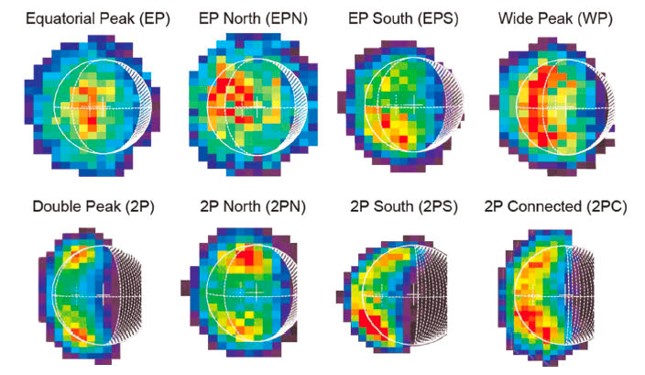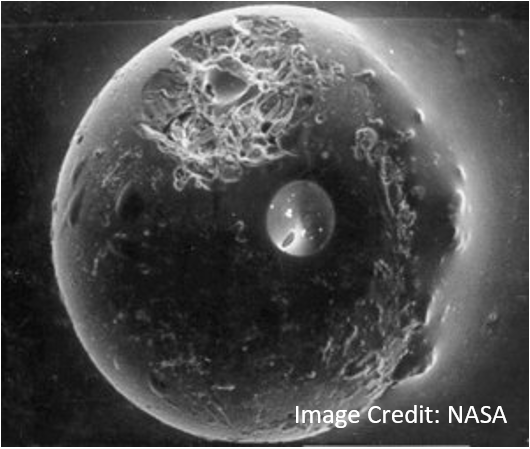Scope
Mercury is a complex system of interconnected parts: its magnetosphere, exosphere, and surface. How this system responds to its interplanetary (solar and dust) environment is equally complex. Numerous models have been developed to understand how solar wind particles and micrometeorites interact with Mercury’s magnetosphere and surface to modify the surface spectral, mineral, and chemical properties and to produce the planet’s exosphere. However, the reliability of these models hinges on how accurately we understand the underlying physical processes responsible for the observed properties.
The scientific questions that this workshop will address grow out of what we have learned from the MESSENGER mission and expect from the BepiColombo observations. Some of these questions include:

- How do the surface composition, mineralogy, and physical conditions affect the surface release processes and particle environment?
- What is the regional distribution of the surface mineralogy of the planet?
- What are the sources of specific elements, particularly the volatiles, in Mercury’s exosphere?
- How does the surface accumulate gas from the exosphere?
- What analog materials does one need to simulate the hermean surface?
Invited Speaker: Peter Wurz
SOC leads: Benkhoff, Domingue, Galli

2. How does the radiative environment affect the lifetime of volatile and refractory elements on the surface of Mercury?
- What are the thermal properties across the surface?
- How do the diurnal variations affect the surface and weathering of the regolith?
- What is needed to simulate the interaction of the hermean radiative environment with planetary analogs?
Invited Speaker: Francois Leblanc
SOC leads: Domingue, Milillo, Sarantos

3. How do ion and electron impacts modify the surface and feed the particle environment?
- What is the spatial distribution of impacting ions and electrons across the planet’s surface and how do these fluxes, energies, and spatial distribution vary with time?
- How do ion and electron bombardment alter surface materials?
- How do these processes contribute to the exosphere?
- What does one need to simulate the hermean ion and electron environment and their interactions with planetary analogs?
Invited Speakers: Jim Raines and Cathy Dukes
SOC leads: Milillo, Murakami, Savin

4. What effects do micrometeoroids have on the Mercury’s surface and space environment?
- What are the characteristics (composition, flux, and velocity) and sources (interplanetary and hermean) of the meteoroids impacting Mercury’s surface?
- Does their impact distribution vary across the surface?
- How does charging of the micrometeoroids affect their interaction with the magnetosphere and ultimate impact distribution across the surface?
- How do micrometeoroids alter surface materials?
- How does this process contribute to the exosphere?
- What does one need to simulate the hermean micrometeoroids environment?
Invited Speakers: Harald Krüger and Lindsey Keller
SOC leads: Sasaki, Thompson, Zender
This workshop will focus on identifying those physical processes whose uncertainties hinder the field’s ability to reliably model Mercury’s response to the solar and interplanetary environment. In specific, the workshop will discuss those studies in laboratory astrophysics, both experimental and theoretical, that are most critically needed in order to advance our understanding of Mercury’s system.
The goal of this workshop is to produce a series of focused reports to guide the scientific community’s efforts for supporting the analysis of the BepiColombo measurements and observations. It will examine the limitations of current planetary models that allow us to understand what is observed in situ building on the underlying laboratory astrophysics data. Furthermore, it will outline the current status of laboratory astrophysics studies applicable to the above questions and what experimental and theoretical work is needed to fully address these unknowns.
